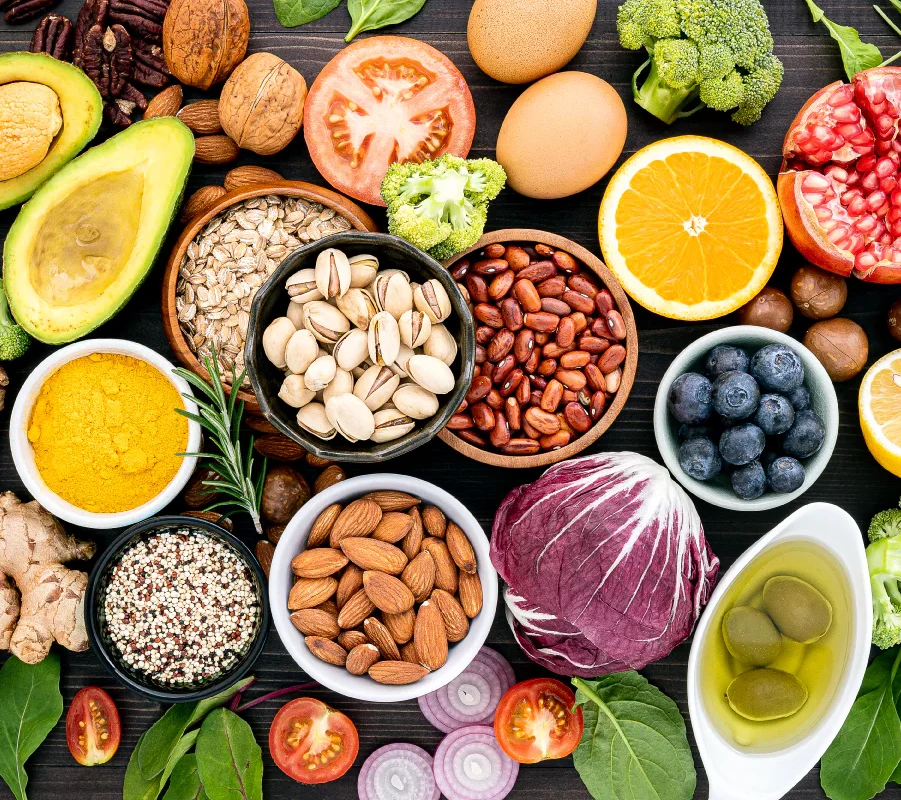Red chilli is a widely used spice that is known for its pungent taste and fiery heat. Native to South America, red chilli has been used in traditional medicine for centuries due to its various health benefits. Apart from being a staple ingredient in many cuisines across the globe, red chilli also offers several therapeutic properties.
In this article, we will explore the uses, benefits and side effects of red chilli. Whether you are a food enthusiast or someone interested in natural remedies, reading this piece will enlighten you on how this vibrant spice can improve your health and wellbeing. So buckle up and get ready to learn all about the amazing world of red chilli!
Explaining the importance of red chilli
Red chilli is more than just a spice that adds heat to your dishes. It contains capsaicin, which has been shown to have several health benefits. Capsaicin can help reduce inflammation, lower blood pressure and cholesterol levels, and improve digestion. It may also have anti-cancer properties.
In addition to its health benefits, red chilli is an important ingredient in many cuisines around the world. It adds flavor and depth to dishes and can be used in everything from soups and stews to marinades and rubs for meats. Its versatility makes it an essential ingredient in any kitchen.
However, it’s important to use red chilli in moderation as too much can cause side effects such as stomach pain, heartburn, and irritation of the eyes or skin. But when used appropriately, red chilli can add both flavor and health benefits to your meals.
Types of Red Chilli:
Red chilli is one of the most commonly used spices in the world. It adds a distinctive flavor and heat to dishes and is available in various forms. There are many different types of red chillies, each with its own unique flavor profile.
One of the most popular types of red chilli is the bird’s eye chilli, also known as Thai pepper. These small, fiery peppers are widely used in Southeast Asian cuisine and have a Scoville rating (a measure of spiciness) that ranges from 50,000 to 100,000 units.
Another type of red chilli is cayenne pepper, which has a slightly milder heat than bird’s eye chillies but still packs a punch. Cayenne pepper is often used in Mexican and Southwestern American cuisine and has a Scoville rating between 30,000 to 50,000 units.
Other types of red chillies include Kashmiri Chillies which are mainly used for their bright color rather than spiciness; Hungarian Wax Peppers which range from mild to medium spice level; Serrano peppers that rank between Jalapeno Pepper and Habanero Pepper on the pungency scale; Anaheim Chili Peppers provide an earthy flavor with mild heat levels perfect for use in stuffing or making sauces etc.
Overall, there are numerous varieties of red chili peppers each having their own distinct taste profile ideal for being added into diverse recipes.
Also Read: WELLHEALTHORGANIC.COM/KNOW-THE-CAUSES-OF-WHITE-HAIR-AND-EASY-WAYS-TO-PREVENT-IT-NATURALLY
Different types of red chillies and their characteristics
There are many types of red chillies available in the market, each with its own unique characteristics. Some of the most popular types include cayenne, bird’s eye, and jalapeno chillies. Cayenne chillies are long and thin with a bright red color. They have a high heat level and are often used in spicy dishes like curries and hot sauces.
Bird’s eye chillies, also known as Thai chillies, are small and pointed with a fiery heat level. They are commonly used in Thai cuisine to add spice to soups, stir-fries, and dipping sauces. Jalapeno chillies are larger than cayenne or bird’s eye chillies with a milder heat level. They have a thick flesh that makes them ideal for stuffing or roasting.
Another popular type of red chili is the Kashmiri chili, which has a deep red color and mild taste compared to other chili varieties. It is often used in Indian cuisine to add color without too much heat. The ancho chili is another variety that has a sweet flavor with mild spiciness and is commonly used in Mexican cuisine for making sauces such as mole sauce.
Overall, understanding the different types of red chilies can help you choose the best one for your dish based on its flavor profile or desired level of spiciness.
Uses and Benefits:
Red chili is a spice that has been used for centuries in various dishes. The uses of red chili are not limited to adding flavor and spice to food, but it also has several health benefits. Red chili contains capsaicin, which helps in reducing inflammation, alleviating pain, and reducing the risk of cancer. Capsaicin is also known for its antimicrobial properties that help fight infections.
Apart from its medicinal properties, red chili is also beneficial for weight loss as it boosts metabolism and reduces appetite. It’s also loaded with vitamins A and C, which are essential for healthy skin and vision. Additionally, red chili can improve heart health by reducing blood pressure levels and lowering cholesterol levels.
However, consuming too much red chili can lead to side effects such as stomach pain, diarrhea, or even vomiting. Therefore it’s important to consume red chili in moderation to avoid any adverse effects while reaping all the benefits it provides.
Various uses and health benefits of red chilli
Red chilli is more than just a spice. It has several health benefits that are often overlooked. Some of the most notable uses and benefits of red chilli include its ability to improve heart health, boost metabolism, reduce inflammation, fight cancer, and aid in digestion.
The capsaicin present in red chilli can help to lower cholesterol levels and prevent the formation of blood clots, which can reduce the risk of heart attacks and strokes. Additionally, this compound stimulates the production of endorphins in the brain which are responsible for boosting mood and reducing feelings of pain.
Red chilli also contains antioxidants that help to protect cells from damage caused by free radicals. These antioxidants have been shown to have anti-cancer properties and may even inhibit the growth of certain types of cancer cells.
Finally, red chilli can aid in digestion by increasing saliva production and stimulating gastric juices. This helps to break down food more easily, allowing nutrients to be absorbed more efficiently by the body. Overall, incorporating red chilli into your diet can provide numerous health benefits beyond just adding flavor to your meals.
Also Read: WELLHEALTHORGANIC.COM:5-HERBAL-TEAS-YOU-CAN-CONSUME-TO-GET-RELIEF-FROM-BLOATING-AND-GAS
Side Effects:
Side effects are a common concern when it comes to consuming red chilli. While the benefits of this fiery spice can be numerous, it is important to also be aware of its potential negative effects on the body. One common side effect of consuming too much red chilli is heartburn and acid reflux, as it can irritate the lining of the stomach and esophagus. This can cause discomfort and even lead to more serious conditions such as gastritis or ulcers.
Another potential side effect of red chilli consumption is an allergic reaction. While rare, some people may experience symptoms such as hives, swelling, or difficulty breathing after consuming red chilli. It is important to monitor for any adverse reactions and seek medical attention if necessary. Additionally, consuming excessive amounts of red chilli may increase blood pressure levels in some individuals, which can pose health risks over time.
Overall, while there are many benefits to incorporating red chilli into your diet, it is essential to consume it in moderation and be aware of any potential negative side effects on your body.
Possible side effects and precautions to take when consuming red chilli
Possible side effects of consuming red chilli can range from mild to severe, depending on the quantity and individual tolerance. Common side effects include a burning sensation in the mouth, throat or stomach, which may cause discomfort and irritation. In some cases, excessive consumption of red chilli can lead to digestive problems such as diarrhea, nausea and vomiting. It can also aggravate pre-existing conditions such as acid reflux, ulcers or irritable bowel syndrome (IBS).
To minimize the risk of side effects when consuming red chilli, it is recommended to start with small quantities and gradually increase over time. It is also advisable to avoid consuming high amounts of red chilli on an empty stomach or before going to bed. Those with sensitive digestive systems should consult a doctor before including red chilli in their diet.
In conclusion, while red chillies are known for their numerous health benefits and culinary uses, it is important to be aware of the possible side effects that come with excessive consumption. By taking necessary precautions and being mindful of one’s own tolerance level, individuals can safely enjoy the flavourful heat that red chillies bring to their dishes.
Cooking with Red Chilli:
Red chilli is an essential ingredient in many cuisines around the world. It adds a spicy kick to dishes and enhances their flavor. However, red chilli is not just used for its taste; it also has several health benefits. Red chilli contains capsaicin, a compound that helps relieve pain, reduce inflammation, and boost metabolism.
When cooking with red chilli, it’s important to handle it carefully as its seeds and membranes can be very spicy. To reduce the heat level, you can remove the seeds or use less of the chili pepper. Red chilli can be used in various forms such as fresh, dried or powdered depending on your preference.
Some popular recipes using red chilli include chili con carne, hot sauce, curries and stir-fry dishes. However, it’s important to note that consuming too much of this spice can cause side effects such as stomach pain and heartburn. Therefore it’s best to use in moderation and consult with a doctor if you have any underlying medical conditions before incorporating red chillies into your diet.
Some great recipes that use red chilli as an ingredient
Red chilli is a popular ingredient in many cuisines around the world. Not only does it add a fiery kick to dishes, but it also has several health benefits. Here are some great recipes that use red chilli as an ingredient:
1. Spicy Thai Red Curry: This dish is a classic Thai recipe that uses red chillies for heat and flavor. You can make this curry with chicken or vegetables like bell peppers, mushrooms, and broccoli.
2. Chilli Con Carne: This hearty Mexican dish is made with ground beef, kidney beans, tomatoes, and of course, red chillies. It’s perfect for chilly evenings and can be served with rice or tortilla chips.
3. Schezwan Fried Rice: This Indo-Chinese recipe combines spicy Schezwan sauce with fried rice and vegetables like cabbage, carrots, and peas. You can adjust the heat level by adding more or less red chillies to the sauce.
Overall, incorporating red chilli into your cooking can add flavor and spice to your meals while also providing several health benefits like boosting metabolism and reducing inflammation.
Conclusion:
In conclusion, red chilli is a versatile ingredient that can add flavor and heat to any dish. It has numerous health benefits, such as boosting metabolism, reducing inflammation, and aiding digestion. However, it is important to consume red chilli in moderation as excessive consumption can lead to side effects such as heartburn, stomach ulcers, and skin irritation.
Moreover, red chilli should not be consumed by individuals with certain medical conditions such as acid reflux disease or irritable bowel syndrome (IBS). It is always advisable to consult a healthcare professional before incorporating red chilli into one’s diet. Overall, when used appropriately and in moderation, red chilli can enhance the taste of our food while also providing various health benefits.
Also Read: WELLHEALTHORGANIC.COM:SOME-AMAZING-HEALTH-BENEFITS-OF-DRINKING-WATER-FROM-AN-EARTHEN-POT






















